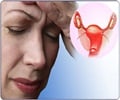A new study has revealed that patients with treatment-resistant depression showed significant improvements in their condition after undergoing deep brain stimulation (DBS).
A new study has revealed that patients with treatment-resistant depression showed significant improvements in their condition after undergoing deep brain stimulation (DBS).
DBS uses high-frequency electrical stimulation targeted to the specific areas of the brain involved in neuropsychiatric disease.During the study, twenty patients were treated with DBS for 12 months. The team found that twelve of 20 patients experienced a significant decrease in depressive symptoms by six months with seven patients essentially well with few remaining symptoms
Benefits were largely maintained at 12 months with continued stimulation. No long-term side effects were reported.
Each patient was implanted with two thin wire electrodes (one on each side of the brain) in the white matter adjacent to subcallosal cingulate region or SCG.
The other end of each wire was connected under the skin of the neck to a pulse generator implanted in the chest -- similar to a pacemaker -- that directs the electrical current.
The researchers regulated the intensity of the current according to the response of the patient.
"We postulated that if stimulation worked for the treatment of other neurological disorders where abnormal function of specific circuits was well established, such as Parkinson''s disease, then stimulation of the Cg25 region within this apparent depression circuit might provide significant benefit for patients with treatment-resistant depression," she added.
The study is reported in the online issue of Biological Psychiatry.
Source-ANI
RAS/L
 MEDINDIA
MEDINDIA




 Email
Email










